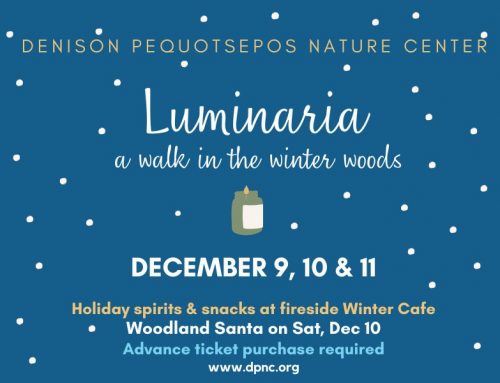The Nature Center is in the process of closing out a six-year federally funded project to restore the shrubland/grassland/meadow habitat around the Nature Center and Denison Homestead properties along Pequotsepos Road and Mistuxet Avenue.
The DPNC is recognized as one of the best places in Connecticut to find a diversity of birds and other wildlife. Restoring the early-successional habitat aids our efforts to continue to provide quality habitat for American Woodcock, Blue-winged Prairie warbler, Eastern Towhee, Brown Thrasher, as well as New England Cottontail, Hognose snake and other old field species known to inhabit the preserve now or in the recent past.

The $26,000 Wildlife Habitat Incentive Program grant awarded to the Nature Center in 2008 by the U.S. Department of Agriculture’s Natural Resources Conservation Service (NRCS) involved the clearing of 3 acres of invasive vine and shrubs around the Denison Farm fields on the west side of Pequotsepos Road. The grant also covered the clearing of about 6 acres south of the DPNC meadow, accessed by a blue-blazed trail known as the “Meadow Loop.” During the past 25 years, trees had overgrown much of this former shrubland. Shrubland and grassland birds and animals have experienced dramatic population declines throughout the region, largely due to loss of habitat as fields grow into forests or disappear under roads, shopping malls or subdivisions. The goal was to return the area to a combination of shrubland and meadow by removing most of the taller trees and invasive species, leaving existing Highbush Blueberry, Red Cedar and other old field species.

In June, a representative of the NRCS came for a tour of the property to gauge success. Javier Cruz was very pleased with the new growth of native herbaceous plants such as milkweed and the relative lack of invasive species such as Autumn Olive, Purple Loosestrife, Porcelain Berry, and Bush Honeysuckle.
One of the aspects that makes DPNC and the Denison Farm such a vital nature preserve is its physical connection to other large open spaces, including land protected by the Avalonia Land Conservancy. Many of the birds and other species here require large unbroken tracts of habitat, therefore changes to the landscape connected to this preserve can impact the wildlife here. The addition of the 45 acres of the Coogan Farm purchased by the Nature Center in 2013 have also helped lessen development pressure along the Mystic River corridor and add to the stability of the habitats.
Restoring the early-successional habitat around the Denison lands, and working at the local, regional and state levels to protect remaining farmlands and open space adjacent to DPNC will help our efforts to continue to provide quality habitat for important native species.



